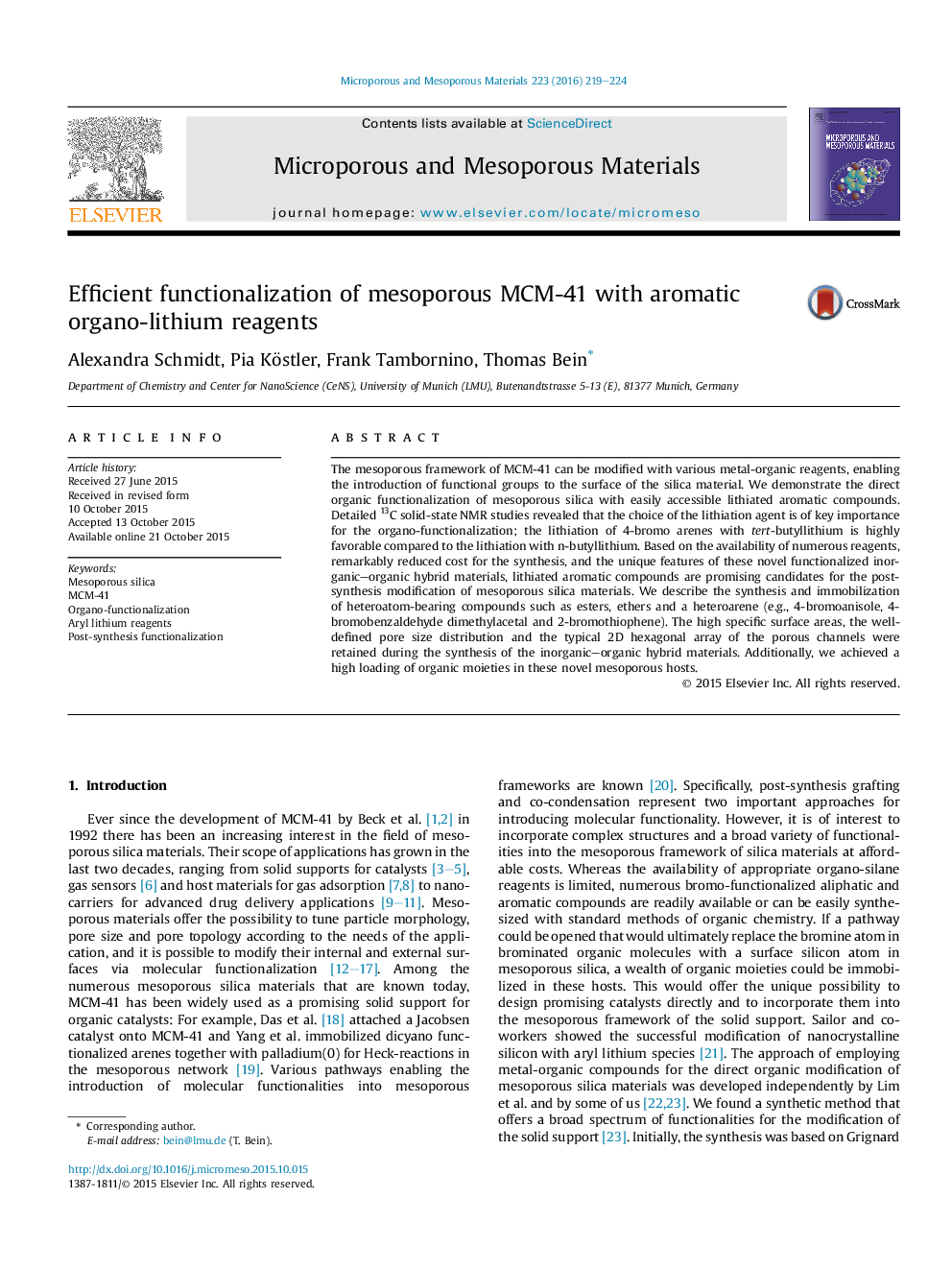| Article ID | Journal | Published Year | Pages | File Type |
|---|---|---|---|---|
| 72296 | Microporous and Mesoporous Materials | 2016 | 6 Pages |
•Facile and direct post-synthetic organo-functionalization of MCM-41.•The structural properties of MCM-41 were retained during synthesis.•Detailed 13C and 29Si solid-state NMR analysis of the hybrid materials.•High functionalization degree of the organic moieties in the mesoporous host.
The mesoporous framework of MCM-41 can be modified with various metal-organic reagents, enabling the introduction of functional groups to the surface of the silica material. We demonstrate the direct organic functionalization of mesoporous silica with easily accessible lithiated aromatic compounds. Detailed 13C solid-state NMR studies revealed that the choice of the lithiation agent is of key importance for the organo-functionalization; the lithiation of 4-bromo arenes with tert-butyllithium is highly favorable compared to the lithiation with n-butyllithium. Based on the availability of numerous reagents, remarkably reduced cost for the synthesis, and the unique features of these novel functionalized inorganic–organic hybrid materials, lithiated aromatic compounds are promising candidates for the post-synthesis modification of mesoporous silica materials. We describe the synthesis and immobilization of heteroatom-bearing compounds such as esters, ethers and a heteroarene (e.g., 4-bromoanisole, 4-bromobenzaldehyde dimethylacetal and 2-bromothiophene). The high specific surface areas, the well-defined pore size distribution and the typical 2D hexagonal array of the porous channels were retained during the synthesis of the inorganic–organic hybrid materials. Additionally, we achieved a high loading of organic moieties in these novel mesoporous hosts.
Graphical abstractFigure optionsDownload full-size imageDownload as PowerPoint slide
